DABU - Spring Summer 2023 Anavila, is an Ode to Brilliant Craftsmanship
- 10th Mar 2023
- 1720
- 0

DABU - Spring Summer 2023 Anavila, is an Ode to Brilliant Craftsmanship
"There is the mud and there is the lotus that grows out of the mud. We need the mud in order to make the lotus."
Thich Nhat Hanh
Stars make you look heavenward, and mud pulls you to Mother Earth. Who hasn't known the waft of fragrant earth as the first rain touches the mud. It is the perfume of life. As E.E.Cummings playfully put it, that moment is childlike, as our world becomes “mud-luscious and puddle-wonderful.”
But here, choosing mud to be the main heroine of a design collection is a deep act of reverence to nature, a spiritual tribute to soil- the fount of life itself.
It couldn't be a more timely affirmation when world over, people especially from the rural and artisanal communities are fighting for soil sovereignty and the sustainability of earth. The Maoris talk about elevating the mana of the soil. Mana, the cultivator of energy and power, of soil. In Sanskrit the earth is Karma Bhumi- the land of dharmic action. The significance therefore of a handful of mud is spiritually interwoven with people and the philosophy of life.
This season Anavila pays homage to Dabu-an ancient mud resist hand block printing technique from Rajasthan, the origins of which can be traced to about 675 A.D.
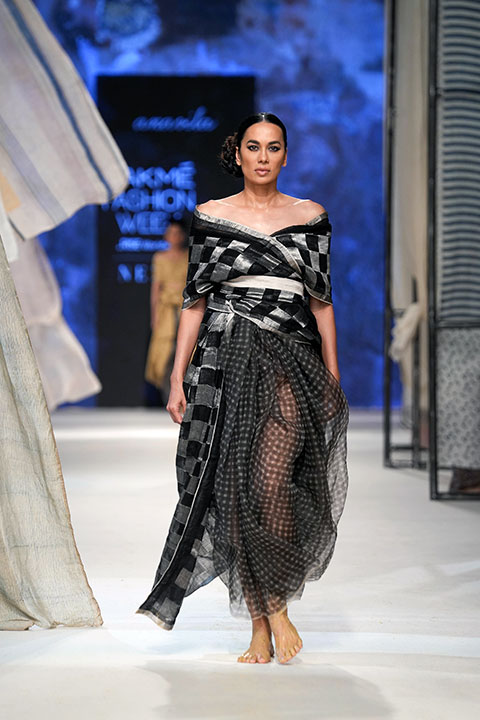
It is a time-honoured village handicraft practised in several rural areas of Rajasthan. In the past, Dabu was only done by women; but today the secrets of the craft are being taken forward by a handful of families who are carefully passing on the craft to the next generation.
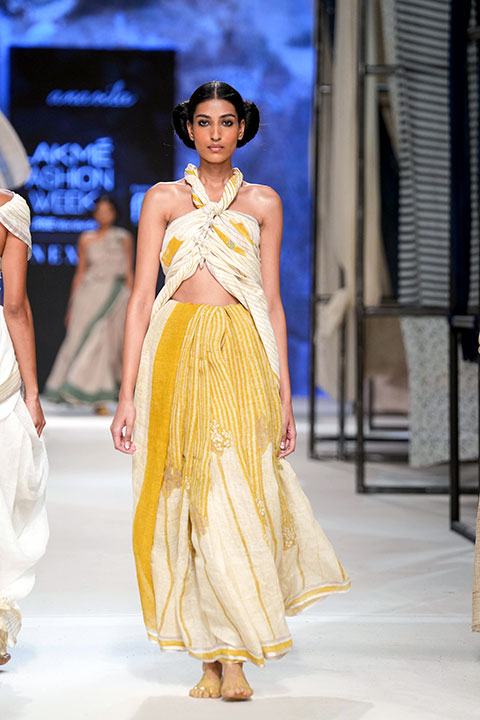
Dabu plays a magical role in Anavila’s repertoire of saris, the length of the textile serving as a perfect canvas for ancient storytelling. If the sari can be seen as an emotion, a state of mind, it is the repository of our past and present memories. Not bound by modern accoutrements of style-zippers, buttons or belts, the sari, uncut and unstitched fabric, speckled by Dabu motifs, flows into the vessel that is the body. The sari becomes the fabric of life.
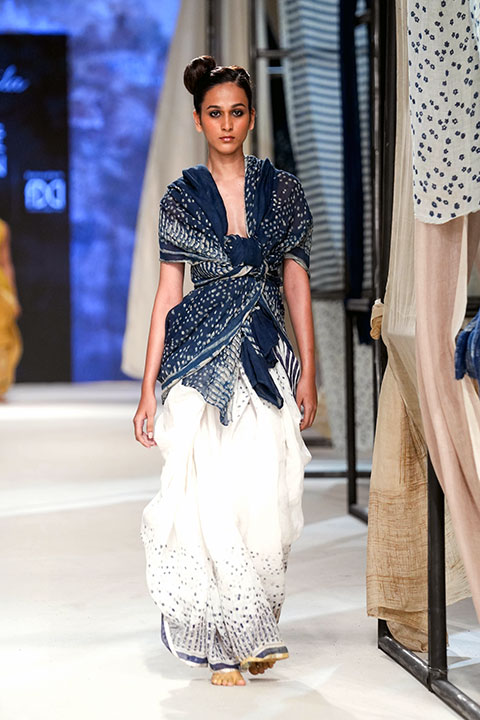
Dabu, which comes from the Hindi word dabana or press, is very labour intensive and involves several stages of printing and dyeing. A deeply sustainable practice, it honours local resources (mud, gum, lime and waste wheat chaff), and a complete reliance on the bounty of nature.
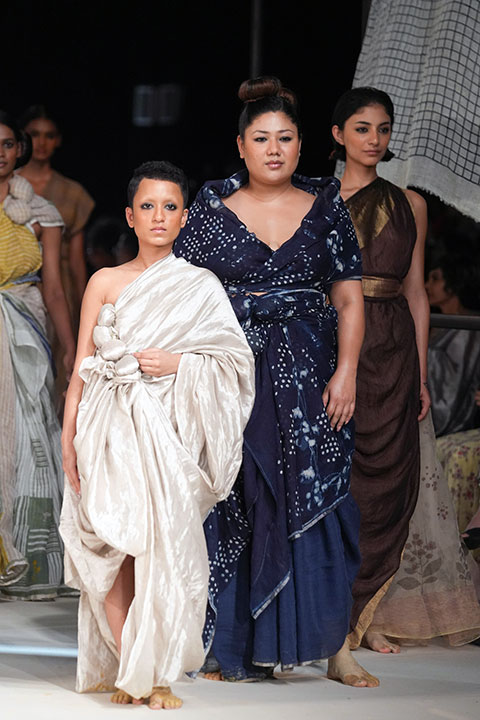
The slowness of the process and the design repetition both lend themselves to a kind of meditation where the maker and method become one. The process is so immersive, it is said, the mind ceases the whirlwind of thoughts and seeks only the unspoken quest for beauty and design symmetry.
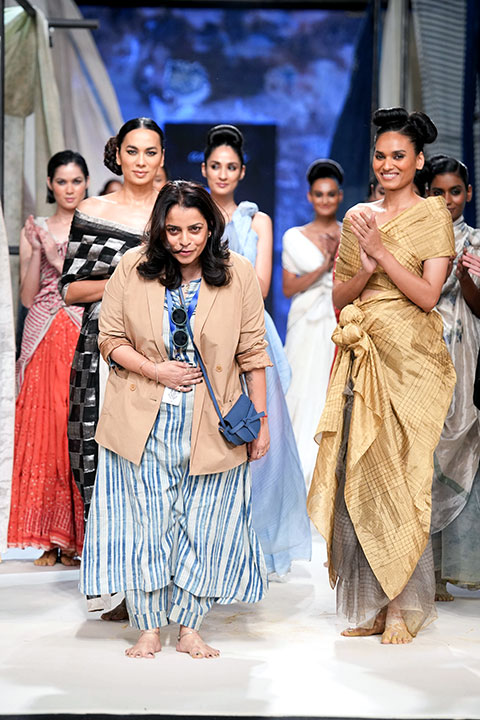
It is no wonder, Anavila’s Dabu saris have extraordinary beauty and depth, the natural dyes of ivory, ochre, sage green, indigo, madder, kashish and black with a luxurious presence of gold and silver- gently washed out by the sun. Fluid florals and architectural geometry, the motifs, are derived from the natural surroundings of local flora and fauna. Sometimes, like our lives, the mud paste cracks and leaks, creating a distinctive vein-like effect - a perfect example of Wabi Sabi - the beauty of the imperfections of the hand.
Rajasthan with its abundance of colour and exaggerated silhouettes is an endless well of inspiration. The draped precision of a pagadi, the layers of folds in a ghagra or the swathes of a chunri- are impeccable designs that work with nature, as they give protection from the heat and cold of the desert terrain- have always inspired the designer.
This collection is in essence a play of the 6 yards sari and how much it can be manipulated with volume. Sometimes free flowing, sometimes restricted, it stirs the imagination of the wearer and her relationship to a 5000-year-old drape.
The artistry lies in the twisting, knotting, and layering of the drapes which gives each garment their unique shape and silhouette. Saris before colonisation of India-worn without blouses and petticoats-were voluminous and diaphanous. The drape, however complex in construction, had every crease and pleat following the contours of the body with precision.
Traditionally, the drapes, knots and folds were carefully constructed around the body in order to carry everyday things like money, coins and herbs. In this collection, these design nuances are recreated as emblems of exaggerated utility. Here you see the alluring contradiction in the sari- the very fluidity of it allows a sense of structure to thrive. It is a design that comes from intuition and self-awareness, allowing the sari to have a wonderful structure of stillness.
“Dabu is about creating beauty through mud. This collection brings forth the relationship between not only the art and the artisan, but also a deep, symbolic bond between human beings and the earth they stand on”
says the designer Anavila.

Mud teaches us that life begins from the ground-up, that a tree does not grow from the leaves but from the roots embedded in mud. It is full of nurturing minerals that feed the soil and soul. Mud is our healer.
"Anavila’s collection is a homage to conscious consumption that takes into account the people, the process, the product and the purpose of creativity. And Dabu steeped in creative oneness with nature makes her collection symbolic of the grace of the feminine experience within nature."
Bandana Tewari
 Namrata Parab
Namrata Parab


Comments
No comments yet.
Add Your Comment
Thank you, for commenting !!
Your comment is under moderation...
Keep reading luxury post